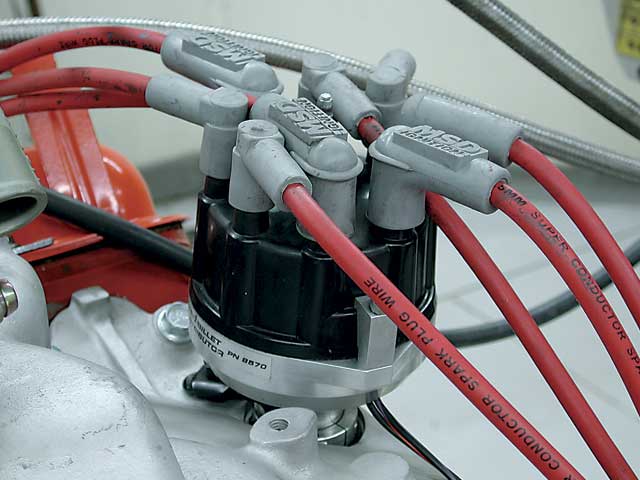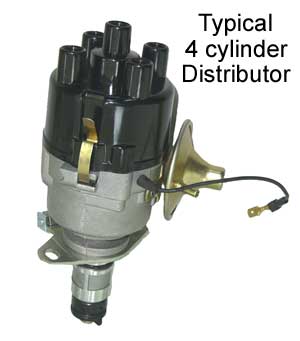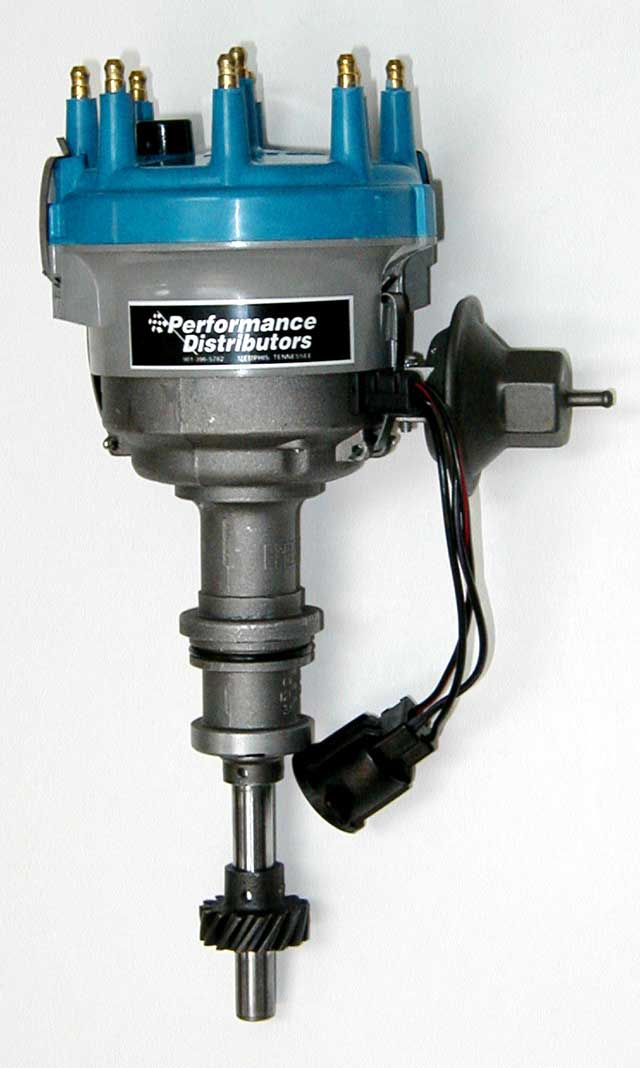| What's Hot! | Products/ Tools | EFI Tuning | Basic Tuning | Advanced Tuning | Chassis Tuning | Advertise with us |
Engine Timing
Ignition Timing Explained/Timing an Unknown Engine
by: Michael Shiffer
First, you should know that there are two types of timing in an engine: cam timing and ignition timing. (Three types, if you count injector pulse, but injection timing on gasoline-powered busses is tied to ignition timing and is not separately adjustable so I will ignore it, as should you.)
Cam timing is what determines when the valves open and close with respect to the position of the pistons in their bores. It is set when the engine is built- by placing the camshaft and crankshaft in the correct relationship. It cannot be adjusted on a stock engine. It doesn’t change: if it was right once it will be right for the life of the engine, barring disaster. And by disaster I mean the park-it-where-stops-rolling kind of disaster. (This is a very rare occurrence in VW air-cooled engines. Not so rare in the Rabbit/Golf ones, which drive the cam with a rubber belt which strips if you don’t change it on schedule.) In sum: cam timing is not connected with or affected by turning the distributor. What distributors time is spark, or ignition. Why?

At idle, your engine is turning relatively slowly, let’s say 1000 rpms. The throttle is closed, so very little fuel and air are being drawn in to the cylinders. This small amount of combustible mixture burns very quickly, so for maximum efficiency, the spark needs to start when the piston is very near top dead center. If the spark comes too early (too advanced), the pressure from the ignited mixture will hit the piston while it is still coming up the cylinder and be wasted trying to shove the piston down before it reaches the end of it’s travel.
If you try to start an engine whose ignition timing is too advanced, the starter will try to turn the crank one way, and the combustion process will try to turn it the other way, and it will seem as if the starter hasn’t enough oomph to start it. Contrariwise, if the timing is set too late (too retarded), the pressure from the ignited mixture (and the power derived therefrom) will dissipate as the flame front chases the piston down the cylinder bore in the rapidly diminishing pressure of the combustion chamber.
In other words, the piston is already on it’s way towards the bottom of it’s stroke, reducing the effectiveness of combustion. The is very fuel inefficient, since a larger throttle opening at idle (set by the idle speed screw) is needed allow extra fuel in to keep the engine idling. In practical terms, the position of the distributor which yields the highest idle speed is within a very few degrees of where it should be set. (If you retard the timing about 5 degrees from this point, you will be awfully close to spot-on.) Of course, this assumes your carburetor (or F.I.)is working well and that the idle mixture is correct.
When driving on the highway, your engine’s timing requirement is different. At higher engine speeds, larger throttle openings and greater loads than idle, you need ignition advance. There are two reasons for this.
First, you are burning more fuel so complete combustion takes longer.
Second, the combustion time, as a percentage of the time the piston is at or near top dead center is much longer because of the piston speed.
What this means is that you have to ignite the charge earlier, while the piston is still coming up, in order to get the full benefit of the pressure against the piston at the right time. Too early or too late timing will have a similar effect at speed as at idle, but greatly magnified and with far more destructive potential. Too retarded timing will give low power, lousy emissions and excessive bore wear. Timing too advanced will cause pinging (a rattling noise usually heard on acceleration), overheating cylinder heads and other problems too scary to contemplate.
I will now pretend that vacuum advance doesn’t exist. It will only confuse things. Distributors have little weights inside that swing away from the shaft as it turns faster. As they move out, they rotate the upper part of the shaft which passes through the plate that the points are bolted to so that the rubbing block which opens the points meets the lobes which hit it (and thus open the points) a little earlier. At what engine speed this advance begins, at what rate it advances and at what engine speed it stops advancing is determined by the shape and mass of the advance weights and the strength of their return springs; at what degree of advance it stops is determined by a limiter on the plate to which the weights are bolted . None of this is meant to be adjusted: the manufacturer sets it up for each engine family it builds, based on compression, cam profile, octane requirements and availability, among other things.


Timing the ignition, then, is a matter of getting the timing correct at one end (idle or full advance) and letting the rest of the range look after itself. If you have a stock distributor and know either the timing at idle or the maximum advance at a given engine speed and you have a good timing light, you will have no trouble setting timing. If not, here are some ways to get in the ball park. I already mentioned that the highest idle speed is very slightly advanced from correct. If you set it there and hear no pinging on acceleration and get good power (ha-ha), you are good. If it pings, retard it little by little until the pinging goes away. If it seems weak, advance the timing a little at a time until you hear pinging or find the engine hard to start, then retard it again.
Before you even start working on your timing you need to have a timing light. Local prices can be costly but online there are many timing lights that will do the job just fine:
***Remember*** to check for other relevant information in the columns and article tables.
ATTENTION READER:
If you enjoyed the information and article you just read be sure to check out our newly released book with even more exciting photo's and information:How to Turbocharge and Tune your Engine

Want to know more about your particular Make and Model vehicle? All of these vehicles are covered in the tech, maintenance and repair articles found above. Enginebasics is the wiki or wikipedia of car part, repair, how to and tuning information. Let us be the class 101 for your automotive learning.
| Ford | General Motors GM | Pontiac | Jaguar | Land Rover | Nissan |
| Toyota | Honda | Lexus | Acura | Lotus | Scion |
| Infinity | BMW | Mercedes | Mitsubishi | Ferrari | Maserati |
| Lamborghini | Volks Wagen VW | Saab | Audi | Hyundai | Kia |
| Subaru | Mazda | Chevy | Volvo | Caddilac | Dodge |
| Chrylser | Daewoo | Porsche | Mercury | Freightliner | MG |
Individual Models
| Ford Mustang | Mitsubishi Eclipse | Mitsubishi Evo | Subaru WRX / STI | Dodge Viper | Chevrolet Corvette |
| Nissan Skyline | Honda S2000 | Nissan 350z | Toyota Supra | Chevy Camaro | Lotus Elise Exige |
| Honda Civic | VW Golf | Dodge SRT-4 | Eagle Talon | Acura Integra | BMW M3 |
| Nissan 240sx | Porsche 911 | Acura NSX | Honda Accord | Toyota Camry | Toyota MR2 |
| VW R32 | Dodge Truck | Mazda Rx7 | VW Jetta | Sand Buggy | Nissan Sentra |
For the latest Automotive news and stories visit the websites below |
Our feature Build: An AWD V6 Civic




